RECENT ARTICLES
- CEBRA: An optimised and standardised sampling protocol for BioBlitz
- Stop it people, the plural of anecdote IS data!
- That's no pollinator, that's a flower visitor
- Add a scale to your macro photos
- What to photograph when counting the wild
- Imagine counting the wild on EVERY street in a city!
- My wild counting workflow
- A butterfly flew through
- Why iNaturalist observations without photos can be research grade
- Why you shouldn’t use a spreadsheet for data entry
- All articles ...
That's no pollinator, that's a flower visitor
When counting the wild, be careful to be precise in your wording and describe exactly what you observe.
written Oct 16, 2021 • by Jon Sullivan • Category: Wild Counting

It’s useful to be precise with your language when counting the wild. What you say should unambiguously mean exactly what you observed, and nothing more. It can take some practice to get good at this. In this article we explore some of the common issues and potential misinterpretations that you should watch out for.
Not all flower vistors are pollinators
If you see a bumblebee visiting a flower, you should not write that you saw a bumblebee pollinating a flower. Maybe you did, but you’d need to be looking much closer to be sure that pollination happened. If you do look closer, you might instead find that the bumblebee is robbing the flower, as bumblebees do with some flowers. That’s when they chew a hole through the side of a flower to access the nectar without getting any pollen on them.
Similarly, consider New Zealand bellbirds, korimako, which feed on nectar, fruit, and insects. The statement “a bellbird in a flowering eucalyptus” is not the same as “a bellbird feeding in a flowering eucalyptus”, which is not the same as “a bellbird feeding from eucalyptus flowers”, which is not the same as “a bellbird pollinating a eucalyptus.” Which, exactly, did you see? “A bellbird in a flowering eucalyptus” could just mean a bellbird perched in a eucalyptus tree. “A bellbird feeding in a flowering eucalyptus” could mean that a bellbird was gleaning for insects on a eucalyptus. “A bellbird pollinating a eucalyptus” implies that you have seen pollen moving from flower to flower on a bellbird. If you saw “a bellbird feeding from eucalyptus flowers”, that’s what you write.

A caterpillar on a plant is not always a herbivore
If you see a caterpillar on a plant, you might write “caterpillar eating plant.” However, you should only do that if you see the catepillar feeding. Did you? Instead, perhaps the caterpillar had dropped from a tree above, or perhaps it had left its host plant to look for a safe place to pupate. You should only write that one species is eating another, when that’s what you see happening.

What is being eaten can make a big difference
What part of organism is being eaten can determine the kind of species interaction that is happening. That makes it useful to be more precise than just say “eating”. For example, the kereru (New Zealand wood pigeon) likes to eat leaves and flowers and fruits. Which of these parts you see it eating will make a big difference for the plant. The plant benefits from its fruit being eaten because kereru are seed dispersers. In contrast, a plant losing leaves and flowers will potentially reduce its health and seed production.
Sometimes it’s not clear which interaction is happening and then it’s best just to say “eaten.” For example, if you see a predator eating a dead animal, that doesn’t always mean that it was predation. Many predators will also scavenge carcasses when they can get them. Some other animal might have killed it and been drven away, like when hyenas can drive away lions from a kill. The animal may also have died of other causes, like bring hit by a vehicle if near to a road. If you’re not sure how the animal being eaten was killed, say “eaten” rather than “predation.”
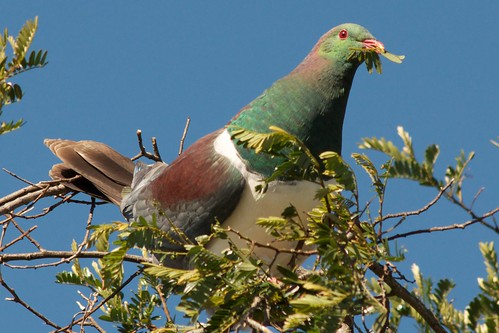
Eating fruit, dispersing seeds, and eating seeds
If I saw a kereru eating fruit, I would write that a kereru was eating the fruit of a plant, not dispersing seeds of a plant, although that could be assumed. I would say it dispersed seeds only if I observed a kereru deficating and I could identify the species of seed in its scat. Even then, I’d be making the assumption that the seed was alive and had survived its journey through the kereru.
Many parrots are a good example of when eating fruit doesn’t mean dispersing seeds. Unlike the kereru, parrots are usually after the seeds in the fruit, and crush and eat the seeds rather than disperse them. For that reason, parrots are usually described by ecologists as “seed predators”. That’s because seeds are baby plants and those baby plants are hunted and killed by parrots. A few seeds might escape being crushed by parrot’s powerful beak and make it out the other end of a parrot, and so even parrots can still be both seed predators and seed dispersers.
When I see a finch, like a goldfinch or chaffinch, eating grass seed or thistle seed, I do describe that as eating seeds (seed predation). Grasses and thistles have wind-dispersed seeds, so the seeds are plainly visible and not buried in a fleshy fruit. These finches have thick beaks for crushing seeds, and seeds form a large part of the diet of many finch species. Having said that, they can still also act as seed dispersers, for the few seeds that slip past their strong beaks.
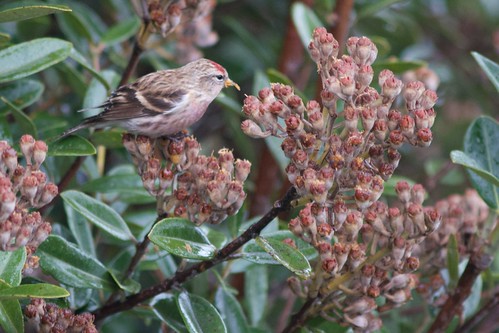
An egg shell is not an egg, but it’s evidence of egg laying
When I see an egg shell on the ground below a bird nest, I can make an observation of that bird species. However, I don’t state that the life stage is “egg”, as the egg has already hatched. Instead, I record it as evidence of egg laying. If a researcher wants to use my data to document the time of year when eggs are present, they don’t want to be including an observation of an egg shell that might have been made several weeks after the last eggs hatched.
In iNaturalist, when you find an egg, you can set Lifestage to “egg” in the observation Annotations. If you instead find an egg shell, or empty egg case, then the Lifestage should be left blank and on the iNaturalist website you can add the Observation field “Animal sign and song” and set it to “Evidence of Egg Laying”.
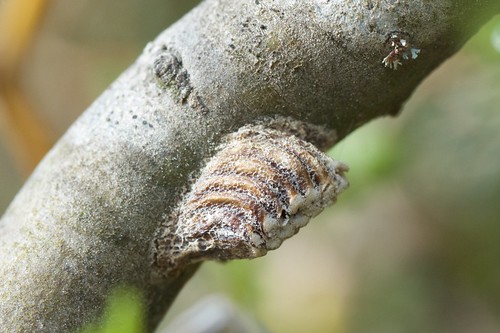

Adults are not larvae, larvae are not nymphs, and pupae don’t hatch
If you just write that you saw a monarch butterfly, it’s not competely clear what you saw. That’s because “monarch butterfly” is both the common name of a species, and of the adult life stage of that species. If you only saw adult butterflies, it’s clearer to say “adult monarch butterflies”. If there were larvae too, say “adults and larvae of monarch butterflies”. The same applies to many species of butterfly, moth, beetle, and fly, where the common names of the species are often the same as the names given to the adult life stage.
Juvenile insects are larvae or nymphs, but those don’t mean the same thing, and one species can only have one. “Larva” is used for juvenile stages that go through several moults to become pupae and then adults (entomologists refer to these kinds of insects as “holometabolous”). All butterflies and moths, beetles, flies and wasps do this, and so they have larvae. Almost everything else in the insect world never makes a pupa. Instead, their juveniles moult into bigger and bigger juveniles until they moult into an adult, with only the adult having fully formed wings. These juveniles are called nymphs, and are not larvae. Think of the difference between a butterfly’s larva (caterpillar), which looks completely different from an adult, and a praying mantis, which looks a lot like an adult praying mantis except it lacks working wings.
“Caterpillar” is an informal word, usually restricted to butterfly and moth larvae. Similarly, “maggot” is an informal word usually restricted to fly larvae. “Grub” is a more general informal word applied to all sorts of juvenile insects and other invertebrates that look like this. It’s best to avoid it in nature observations because its exact meaning is vague.
If you say that a butterfly is hatching, that means that a young caterpillar (butterfly larva) is emerging from its egg. Just like with chickens, butterfly eggs hatch. A butterfly pupa (chrysalis) does not hatch, because it’s not an egg. Instead, an adult butterfly “ecloses” from its pupa. If “eclose” is a word your head doesn’t want to remember, just use “emerge” and specify the life stage. A caterpillar can emerge from an egg and an adult butterfly can emerge from its pupa. (If you’ve found one pupa, it’s “pupa” but if you’ve found several, the plural of pupa is pupae. That’s Latin for you.)

Seedlings, juveniles, and vegetative adult plants
Like insects, the lifestages of plants can sometimes be tricky. Aside from pollen grains and the ovaries inside flowers, there are seeds, juveniles, and adults. Documenting what plant stage(s) are present at a site helps to understand how the population is doing, and how it might be reacting to changing environmental conditions. If you count the same individual plants each time you pass, it is useful to know how long it takes for them to reach adulthood (and then when and how often they reproduce).
Adults are plants that can reproduce. That’s easy to tell when they’re flowering or fruiting, but can be unclear at other times for smaller plants. That’s especially true for species that die back and regrow seasonally, or can regrow after being knocked down (or cut down). If you look closely, there can be tell-tale signs of past fruiting left on plants. When I’m not sure, I’m forced to write the WildCounts shorthand code ja, meaning a juvenile or adult.
“Seedling” is a more vague concept. When a seed first germinates, it makes a seedling, but how big and old does that plant need to be before it’s no longer a seedling? A 5 m tall juvenile tree in the forest understorey is no longer a seedling. What about a half metre tall 20-year old tree, waiting on the forest floor for its chance to grow in the light when a nearby adult tree falls down?
Different forest survey methods, in different parts of the world, use different arbitrary height limits for when a young tree is no longer a seedling (and progresses to a “sapling”). When I was working in the central American tropics, 50 cm was often the cut-off used. In New Zealand, the standard forest survey method uses 30 cm, for “small seedling”, and greater than 30 cm but less than 1 metre for “seedling”. There’s no one global standard, but you should at least be consistent within your own notes.
Of course, plants come in many more sizes and shapes than trees, which adds to the confusion about when a plant is no longer a seedling. When it’s not a tree, I use “seedling” (b or stage seedling) when it’s a tiny plant that’s clearly just germinated in the past few weeks, and for bigger juveniles, I just say “juvenile” (j or stage juv). I’ve accepted that there will be some unavoidable overlap. Its best to regard seedlings as young and small juveniles, but still juveniles, rather than something consistently different.
Ferns add another layer of trickery since they have free-living multicellular “sporophytes” and “gametophytes”. Gametophytes are “haploid” (have one copy of each chromosome), like a sperm or egg. In flowering plants, the gametophytes are the pollen grains and ovaries, but in ferns, they are a free living small multicellular plant of their own. Those free-growing gametophytes produce sperm and eggs, which fuse and divide to grow into the larger multicellular “sporophytes” that are what most of us recognise as ferns. If you look carefully, you might find both.
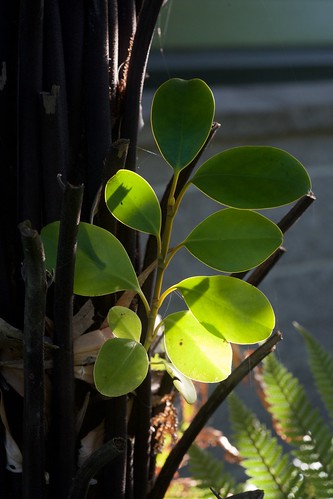
Flower buds, open flowers, and old flowers
Recording the timing of flowering can take some care, especially around when, exactly, flowers are open, and when, exactly, they’re finished. That’s more obvious on some plants than others. When I record flowering phenology, I try to think like a pollinator. A flower bud is still a flower bud when it’s starting to show its first petals, but hasn’t opened up enough to allow a pollinator in. At the other end, a flower is finished when its petals a drooping and starting to drop, signalling that there’s no more nectar available. If all flowers on a plant are old like that, I record that the plant is no longer flowering and now has old flowers/immature fruit (IM).
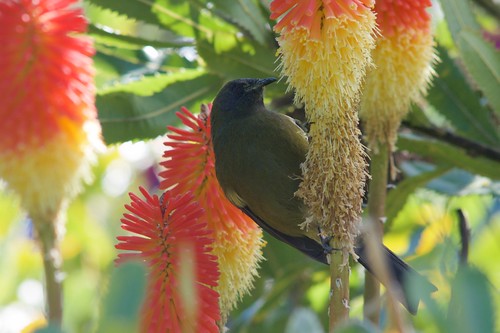
Bird songs and bird calls
Bird “song” and “call” can be about as slippery a concept as “seedling”, but also can be just as useful to consistently count for particular species. As a general rule, a bird song is the complicated, often learned, loud vocalisations used for mate attraction and territory defense, while calls are simpler, innate vocalisations, often used for communication over shorter distances. That’s a general rule that’s sometimes broken, so it pays to know the bird species that you count, and how bird experts regard each species’ vocalisations.
For birds that do have clearly different songs and calls, it can be informative to write down which vocalisation(s) they’re making when you hear them. There are typically strong seasonal effects on when birds sing, or make particular calls. It’s useful to know how this is changing over time as the climate warms, as changing vocalisations indicate other changes in bird behaviour, like territory establishment and breeding. Young birds often make distinctly imperfect songs as they learn, so song can also be a good way of counting juveniles when they are present.
Doing all this requires a clear and consistent notion of what is a song and what is a call, for the species that you count. For species that make severals kinds of songs and calls, it’s also helpful to have standard written words, or phrases, to describe each type of vocalisation. Check the local bird field guides as that’s likely already been done for your birds.
Blackbird song: inaturalist.nz/observations/78042543
Say what you saw
This all comes back to one of the core WildCounts principles, “Never guess and never interpret”. The challenge is to use your words to unambiguously describe exactly what you observed. To do this, you should always keep in mind how others might (mis)interpret what you write. Keep your writing simple and precise to make it clear exactly what you mean.
If you make the interpretation that what you saw was likely pollination, or that it was likely predation, then you could choose to add this to the comment of an observation. If you do, make sure that it’s clear that this is your interpretation of what you saw, and give the reasons why you’re making this interpretation. My preference is to keep things simple and leave the interpretation to later, keeping it separate from my observations.
If I saw a bumblebee visiting a flower, then that’s all I need to say.
